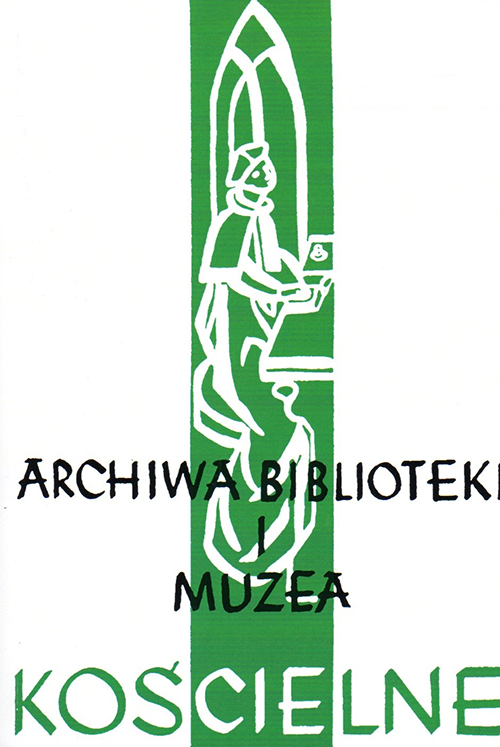Działalność kolekcjonerska ks. Jana Wiśniewskiego, na tle zainteresowań przeszłością sandomierskiego środowiska duchownego przełomu XIX i XX wieku
Rev. Jan Wiśniewski’s collecting activity compared to the interest in the past expressed by the cleric environment of Sandomierz at the turn of the 19th and 20th centuries.
Author(s): Urszula StepieńSubject(s): Christian Theology and Religion, History, Fine Arts / Performing Arts, Theology and Religion
Published by: Katolicki Uniwersytet Lubelski Jana Pawła II - Wydział Teologii
Keywords: Rev. Jan Wiśniewski; Rev. Józef Rokoszny; Borkowice; Długosz House; Sandomierz; Theological Seminary; the Diocesan Museum; collecting
Summary/Abstract: The article attempts to show the collections of Rev. Jan Wiśniewski (1876-1943). Rev. Wiśniewski was strongly influenced by a spiritual atmosphere of Sandomierz - the place of his seminary studies and the ecclesiastical environment interested in the past and souvenirs of the past. The first teachers at the seminary were role models and support for him. Rev. Wiśniewski donated the Diocesan Museum in Sandomierz remarkable artistic and patriotic collections, astonishing in terms of richness and diversity. His collecting interests were rooted in the nineteenth century, in the atmosphere of developing patriotic thoughts and awaking interest in the history of his own country, which was in captivity. In addition to the collector’s activities, Rev. Wiśniewski was involved in extensive research activities. As an amateur historian, he edited and published 15 volumes of Monografia dekanatów (A monograph of deaneries) and Historyczne opisy kościołów (Historical descriptions of churches). Initially, Rev. Wiśniewski amassed his collections in Radom, and then in Borkowice. At the presbytery in Borkowice he arranged a "museum of national remembrance." He lent his collections on numerous exhibitions. The preserved source materials indicate the extensive contacts of Rev. Jan Wiśniewski with collectors, antiquarians, art dealers and bibliophiles, among them were many outstanding figures. Rev. Jan Wiśniewski’s collection gave rise to the foundation of the Diocesan Museum. It was created on the basis on his private collection, as his personal idea was, from the beginning, to make the collection available to the next generations.
Journal: Archiwa, Biblioteki i Muzea Kościelne
- Issue Year: 2015
- Issue No: 104
- Page Range: 269-295
- Page Count: 27
- Language: Polish

